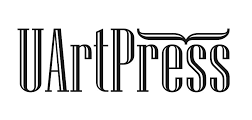Secrecy and Confession of Silence in Performance
Keywords:
silence, Printre tăceri (Silence)Abstract
The creators of art play with the polarity of shown and hidden to attract the receptor of art in the alchemy of their opera. Crossing the borders of the words to the “unknown”, to the silence of the non-verbal performances, the public becomes connected with a spring of energy and significance that reveals a hermeneutics of silence in which we could find ontological insights. Starting from the scene “The Hands” from Isabella Drăghici’s performance “Silence” (“Printre tăceri”), we explore a number of specific spiritual and theatrical aspects of silence on stage from contemporary or old theories, practices and perspectives, such as consciousness studies, Rasa Theory, Lecoq’s vision, David Le Breton anthropology of silence, Jung’s theory of unconscious, and the non-verbal theatre language of Dan Puric. The theatrical expression of silence on stage (body movement, dance, gesture, mime, visual effects) is investigated in a bipolar context: secrecy and confession.
References
ANDERSON, R., 1998. “Intuitive inquiry: A transpersonal approach”. In Transpersonal research methods for the social sciences: Honoring human experience, eds. Wil-liam Braud and Rosemary Anderson, 69-94. Thousand Oaks, CA: Sage Publica-tions.
BLAGA, L. (1982 - 1997). Opere (Works, vols. 1-6), II, București: Ed. Minerva.
CLEMENTS, J., 2004. “Organic inquiry: toward research in partnership with spirit”. In: Journal of Transpersonal Psychology 36:1, p. 26-49.
GHOSH, M., editor and translator, 1950. The Natyasastra. A Treatise on Hindu Dramaturgy and Histrionics. Calcutta: The Royal Asiatic Society of Bengal.
GNOLI, R., 1985. The Aesthetic Experience According to Abhinavagupta. Varanasi: Chowkhamba Sanskrit Series.
LARSON, G. J., 1976. “The Aesthetic (Rasāsvāda) and the Religious (Brahmāsvāda) in Abhinavagupta's Kashmir Śaivism”. In: Philosophy East and West, 26:4, p. 371-87.
LECOQ, J., 2006. Theatre of Movement and Gesture, London: Routledge.
LE BRETON, D., 2001. Despre Tăcere (About Silence). București: All Educational (Orig-inal edition: Du Silence, 1997, France, Métailié).
MALEKIN, P., YARROW, R., 1997. Consciousness, Literature and Theatre: Theory and Beyond, London/New York: MacMillan/ St. Martin’s Press.
MEYER-DINKGRÄFE, D., 1996. Consciousness and the Actor: A Reassessment of West-ern and Indian Approaches to the Actor's Emotional Involvement from the Pers-pec¬tive of Vedic Psychology. Frankfurt am Main: Peter Lang.
MEYER-DINKGRÄFE, D., 2005. Theatre and Consciousness: Explanatory Scope and Future Potential. Bristol: Intellect.
MEYER-DINKGRÄFE, D., 2013a. Theatre, Opera and Consciousness: History and Current Debates. Amsterdam: Rodopi.
Meyer-DINKGRÄFE, D., 2013b. Observing Theatre: Spirituality and Subjectivity in the Performing Arts. Amsterdam: Rodopi.
MEYER-DINKGRÄFE, D., 2016. “Holistic experience of opera and the International Op-era Theater (IOT)”. In: Studies in Spirituality 26, p. 373-392.
MEYER-DINKGRÄFE, D., 2017. "Towards a Theatre of the Heart". In: Annals of the University of Bucharest: Philosophy Series 66:1, p. 199-221.
MOUSTAKAS, C., 1990. Heuristic Research: Design, Methodology and Applications. London: Sage.
Nāṭyaśāstra NS (Tratat de artă dramatică), 1997. București: Editura Științifică.
TART, C., 1972. “States of consciousness and state-specific sciences”. In: Science 176, p. 1203-1210.
VARELA. F. J., SHEAR, J., 1999. “First-person methodologies: What, why, how”. In: Journal of Consciousness Studies 6:2-3, p. 1-14.
Downloads
Published
How to Cite
Issue
Section
License
CC-BY permits any use, reproduction, distribution, self-archiving and citation of the work as long as the authors are credited. The complete bibliographical data of Symbolon Journal must also be indicated, which you can find in the How to cite section on this page. If possible, please also place a link leading to the original publication.
Copyright of the paper belongs to the author(s).




